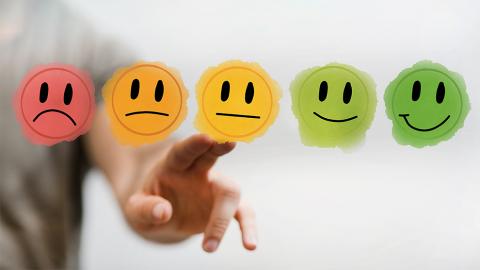
Muchos psicólogos utilizan los rasgos, estados y comportamientos para contrastar la seriedad con la jovialidad. Las personas serias tienden a comprometerse, mientras que las personas juguetonas tienden a trascender.
RASGOS: Una "persona seria" quiere funcionar exclusivamente en el modo genuino de comunicación. Esto no es cierto para una "persona juguetona".
ESTADOS: Una persona puede estar en un estado serio/pensativo o en un estado juguetón/tonto.
COMPORTAMIENTOS: Una persona puede contar un chiste o hacer payasadas.
Willibald Ruch señala que existen diferentes tipos de humor. El “humor afiliativo” implica la tendencia a decir cosas graciosas, contar chistes y participar en bromas espontáneas e ingeniosas. El “humor auto-reforzante” es un mecanismo de afrontamiento. El “humor agresivo” implica sarcasmo, burlas, ridiculización, menosprecio y comentarios despectivos. El “humor auto-despectivo” ocurre cuando las personas permiten ser el blanco de las bromas de los demás. Ruch y muchos otros psicólogos están estudiando, por lo tanto, la "gelotofobia" (miedo a la risa) y la "gelotofilia" (placer al ser objeto de risa).
Consideremos las siguientes emociones: ira, anticipación, curiosidad, deseo, miedo, tontería, felicidad, amor, narcisismo, tristeza, escepticismo, satisfacción y sorpresa. También hay diferentes tipos de sonrisas: como cuando se disfruta una película repugnante o aterradora, para enmascarar emociones negativas como tristeza, ira o miedo, al coquetear, al sentir placer sádico o vergüenza, al aceptar algo con desdén, al experimentar emociones mixtas o al sentir presión social.
También existen diferentes estilos de humor, como cuando una persona es socialmente cálida vs. socialmente fría, reflexiva vs. tosca, competente vs. inepta, desenfadada vs. reprimida, benévola vs. malintencionada. Debemos recordar que tanto los optimistas como los pesimistas contribuyen a la sociedad. El optimista inventa el avión, y el pesimista inventa el paracaídas.
(This text has been translated into Spanish by Chat GPT)

Humor in Psychology and Emotion Studies
By Don F. Nilsen
Many psychologists use Traits, States, and Behaviors in contrasting seriousness with playfulness. Serious people tend to engage; while playful people tend to transcend.
TRAITS: A “serious person” wants to function exclusively in the bona fide mode of communication. This is not true for a “playful person.
STATES: A person can be in a serious/pensive mode, or a playful/silly mood.
BEHAVIORS: A person can tell a joke, or clown around.
Willibald Ruch notes that there are different types of humor. “Affiliative Humor” involves the tendency to say funny things, to tell jokes, and to engage in spontaneous witty banter. “Self-Enhancing Humor” is a coping mechanism. “Aggressive Humor” involves sarcasm, teasing, ridicule, derision, put downs, and/or disparagement; and “Self-Deflecting Humor” is when people allow themselves to be the butt of other people’s jokes. Ruch and many other psychologists are therefore studying “gelotophobia” and “gelotophilia”.
Consider the following emotions: anger, anticipation, curiosity, desire, fear, goofiness, happiness, love, narcicism, sadness, silliness, skepticism, smugness, and surprise. There are also different types of smiles: as when enjoying a disgusting or frightening film, masking negative emotions of sadness, anger, or fear, flirting, feeling sadistic pleasure, or embarrassment, complying to something contemptuous, having mixed emotions, or feeling under social pressure.
There are also different humor styles, as when a person is socially warm vs. socially cold, reflective vs. boorish, competent vs. inept, earthy vs. repressed, benign vs. mean-spirited. We must remember that both optimists and pessimists contribute to society. The optimist invents the airplane, and the pessimist invents the parachute.
Don and Alleen Nilsen “Humor Across the Academic Disciplines” PowerPoints: https://www.public.asu.edu/~dnilsen/

